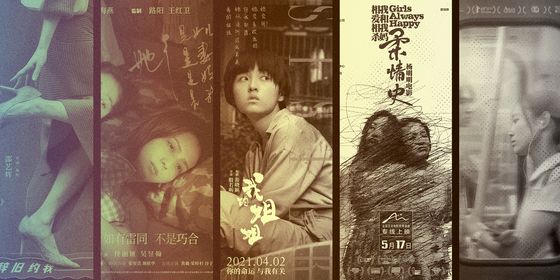A Xinjiang deity with a history as old as China itself lives on in a small Beijing festival
Today is the third day of the third month of the lunar year, which means it’s the feast day of an ancient Chinese deity whose star may have waned in the recent millennium, but is seeing her legacy revived at the annual “Saturn Peach Temple” fairs across the country.

Cave painting of the Queen Mother of the West and her court in Dunhuang [Sina]
Unlike other well-known Chinese deities such as the Guanyin bodhisattva or the Three Loyal Kings, which are borrowed from (respectively) Buddhism and real-life figures from Chinese history, the Queen Mother of the West appears to be an entirely indigenous Chinese folk invention and is one of the earliest divine beings of the Chinese civilization—mentions of her can be found on the oracle bone inscriptions of the Shang dynasty (1600-1046 BCE), making her about as old as China’s recorded history itself. As her name indicates, she was believed to live in the western lands, identified as “Mount Kunlun” in The Classic of Mountains and Seas (the present-day Kunlun Mountains in Xinjiang is named after her abode). It’s said that she grew peaches that bore fruit every 3,000 years and would serve them to her visitors, which made them immortal.
The Queen Mother of the West was later incorporated into the Daoist pantheon and appeared in numerous poems and other works of literature, most famously The Journey to the West, from the Tang dynasty onward. She was supposed to be the patron of all women, being surrounded by a court comprising many other powerful goddesses at her palace. Her temple fairs during the Qing dynasty, depicted in these old photos below, were not only occasions for revelry and handicrafts-display, but a time when many women would would to the temple to pray for children. They would purchase painted clay figurines called “tying-up dolls” (拴娃娃) as offerings to the Queen Mother.

Young woman burning incense at the old Beijing Saturn Peach Temple, most likely during the Republic of China era [Sina]

A performer entertains at the temple fair with diabolo—appears to be sometime prior to the Qing dynasty judging by the queues [Morning Post]
Today, only a plaque commemorates the temple’s former location on the south side of Dongbianmen bridge, across from the (thankfully still standing) Southeast Corner Tower of the old city wall. Though traditional handicrafts, performances, and other typical fair activities (like food and games) are still offered at the revived temple fairs, it’s the neighborhood dama who have worked hard all year to prepare dance performances who appear to be the main women honored at the festival these days.
The fair is held in conjunction with the Beijing City Wall Relics Park Plum Blossom Festival, which continues through the weekend.
Cover image from bbs.qianlong.com; other images by Hatty Liu.
















